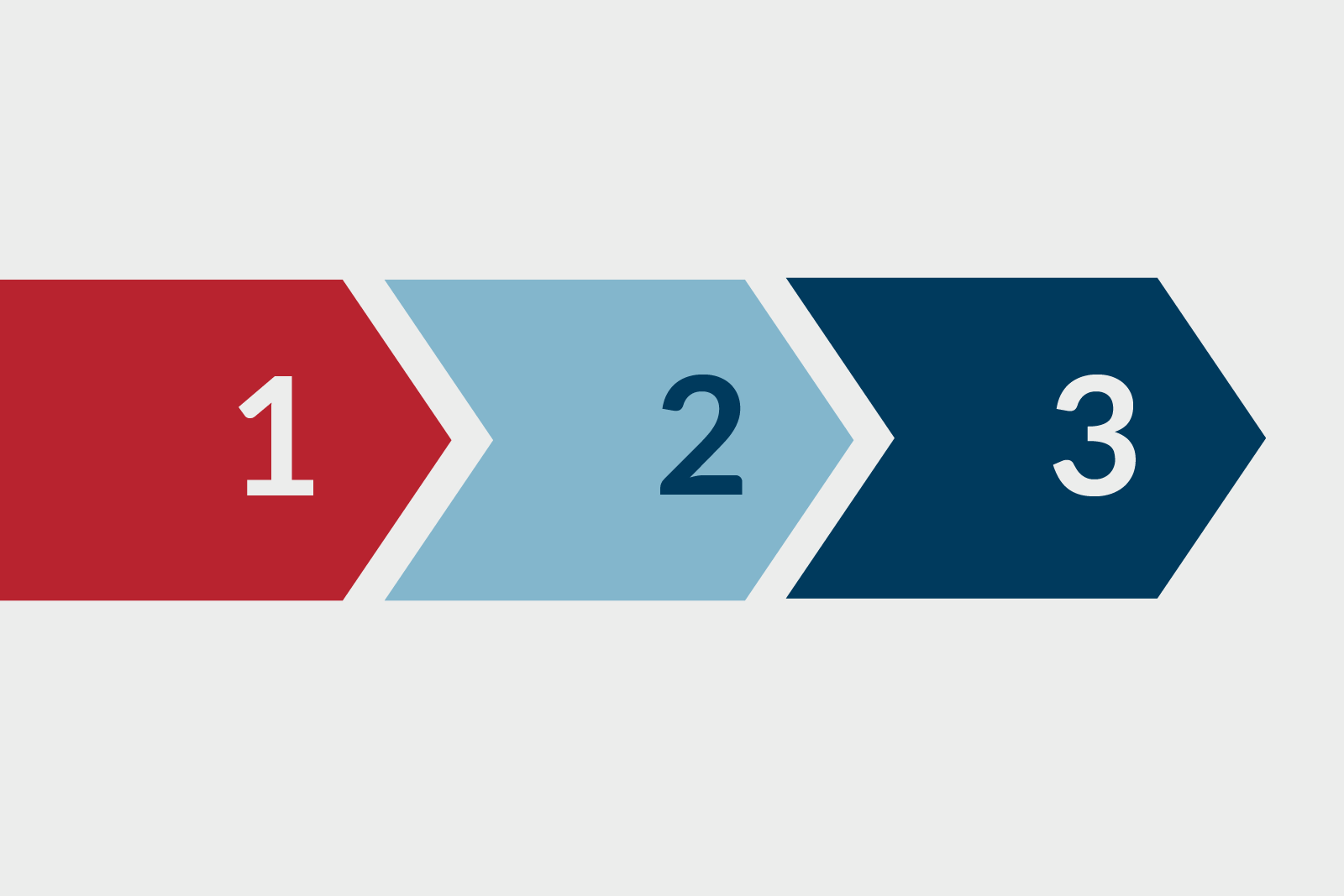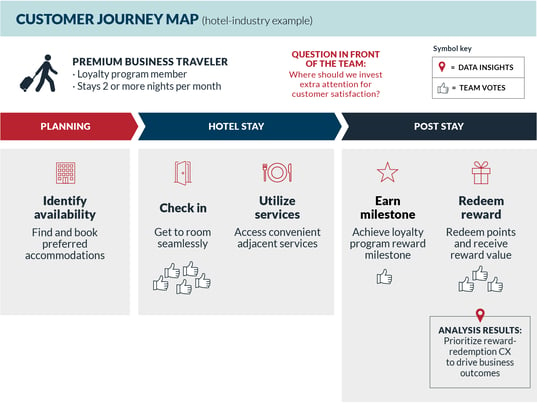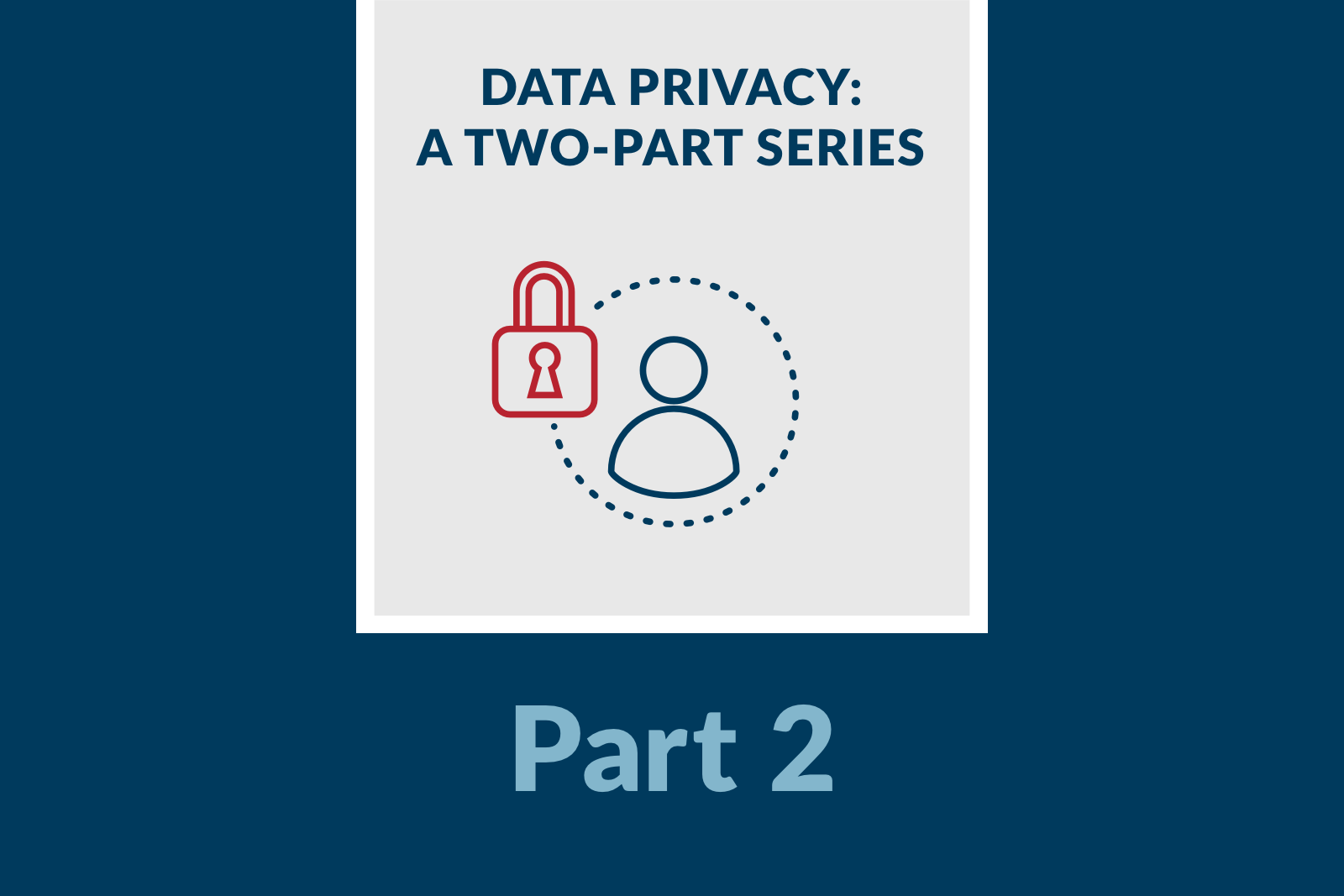Using Data to Enhance Your Customer Journey Maps

Trust, but verify. You’re likely familiar with the phrase. It’s a translation of a Russian proverb that boils down to the idea that belief needs to be backed up by observational data. For customer experience (CX) professionals this means using all available data sources to bolster your customer insights, understand the value of critical moments, and track customer ease and satisfaction as they interact with your brand.
Start, but don’t end, with your hypotheses map
Customer journey maps, which are insights tools at their core, should continually strive to achieve the most accurate, empathetic view of customer needs, motivations and pain points. Customer journey maps are built to see things through the end-to-end experience of the customer, and then identify gaps or opportunities where brands can add value. These gaps or opportunities give CX designers goals by which to design repeatable and delightful interactions at those critical moments in the journey.
Many customer journey maps are a composite of team knowledge (based on observations of the customer experience) and customer research (such as user experience [UX] surveys and interviews). Both sources are great for hypothesizing what happens throughout the journey and why—but there are additional ways to layer in data that will help illustrate what’s actually happening.
Pay attention to what customers do, not just what they say
At The Lacek Group, we observe that what people do (behavioral data) is more relevant than what they look like (demographic data) or what they say they do (attitudinal data).
The use of advanced analytics can reveal opportunities you might otherwise miss. Using a generic customer journey map from the hotel industry as an example, here are ideas for using data layers to validate or challenge your assumptions about your customers’ experience:

-
Transactional data. While pure transactional data will provide some insights, it’s the context around purchase data that brings it to life.
“Utilize services” moment: Transactions show low hotel bar and restaurant spend per stay with our key audience, the high-end business traveler. Deeper analysis identifies that a higher spend correlates with check-ins after 7:00 p.m. Here’s an engagement opportunity: cross promote the restaurant at check-in.
-
Digital data. Identify gaps or opportunities in the micro moments of the digital journey using third-party tools. Early in the journey, Google often has a critical influence on which brands enter the selection set. Using third-party tools like SEMrush or Google Keyword Planner, you can see the demand for nonbranded search terms and how your brand shows up. Similar tools can help audit for gaps in social channels (RivalIQ) or email (ESPs, ReturnPath).
“Check in” moment: Customer research shows that consumers who use the app are more satisfied with the hotel brand. Using a third-party app tool like Appbot, you see the reviews for mobile check-in functionality are significantly less favorable than your competitors’. This reveals a gap in the check-in experience.
-
Emotional data. Bolster your emotional insights across the journey by employing emotional analytics. These software providers translate facial expressions and vocal tones into emotional categories such as fear, anger or joy.
Digging deeper in the “check in” moment. Running review data from Appbot through a text-analysis software reveals that the most intensely negative emotion about mobile check-in arises when the mobile-key function doesn’t work properly, illustrating the importance of boosting its reliability.

-
Correlation or regression analysis. Whether you call it a micro moment, critical moment, or moment of truth, parts of the journey demand extra attention and resources. But which ones? Use traditional analysis to find the right answer for your customers.
Prioritizing the moments: With limited resources, do you invest in the moment customers check in, when they reach an earning milestone or when they redeem the reward? The check-in experience might seem like the obvious choice, and a team vote bolsters that view. But a close analysis reveals that member reward redemption correlates with higher NPS scores, retention and long-term value. Here the data challenges the straw vote.
-
Trending data. Let’s face it, since the pandemic and subsequent economic disruption people are changing their behavior patterns. The travel industry, for example, has seen profound changes in customer behavior patterns. Be sure to look at your data with that in mind. As you design and revise the user experience, identify shifts in customer behaviors and use that information to project what you expect to see in the future.
Apply all the available data to understand and exceed your customers’ expectations
Customer expectations evolve with every new smartphone release, cutting-edge app, and unforeseen market disruption. Once Amazon offered Prime users free shipping, it became the industry expectation. Understanding those expectations is a kind of alchemy—a bit art and a bit science.
Certainly, the informed observations of people inside and outside the walls of your company are valuable insights. Equally useful is data about what customers actually do. Combining all the available information to continually refresh customer journey maps is critical. That’s how you can ensure your CX design is built on a clear and encompassing view of what matters to your customers.
In today’s fast-moving digital landscape, we probably need to update the proverb. We’re navigating a “Trust, but verify—and then verify, and verify, and verify again” world.
Joe Rueckert is the director of strategic services at The Lacek Group, a Minneapolis-based, data-driven, loyalty, experience and customer engagement agency that has been delivering personalization for its world-class clients for more than 30 years. The Lacek Group is an Ogilvy company.

